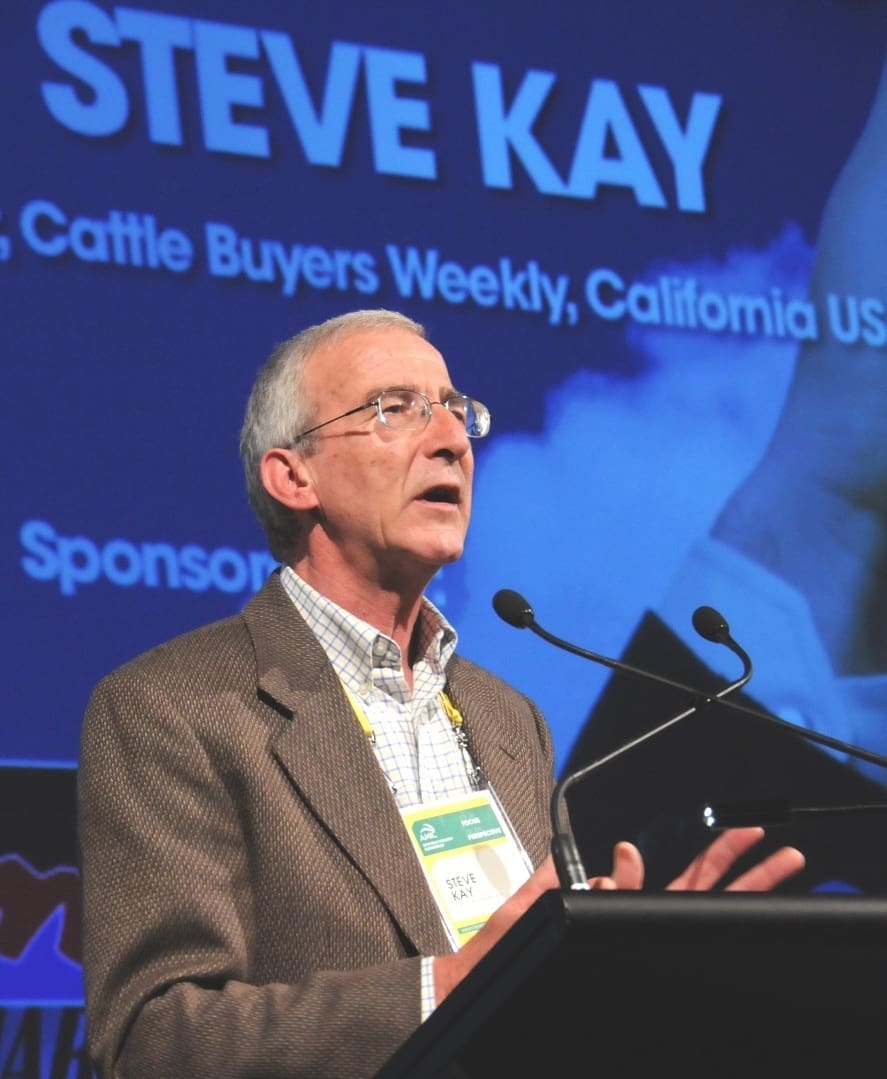 A monthly column written for Beef Central by US meat and livestock market commentator Steve Kay, publisher of US Cattle Buyers Weekly
A monthly column written for Beef Central by US meat and livestock market commentator Steve Kay, publisher of US Cattle Buyers Weekly
THE question in this month’s column headline reflects the most pertinent issue facing the United States beef industry at present.
That is because the US cattle herd on January 1 had shrunk to its lowest level since 1951. A fifth year of herd liquidation meant the January 1 total for cattle and calves was 87.157 million head, down 1.9 percent or 1.684 million head from the year before.
Yet there are still no signs that herd rebuilding is about to start.
The current numbers and likelihood of even smaller numbers for another 18 months have several consequences, almost all of them negative.
US ranchers will continue to receive record or near-record prices for their calves and yearlings. But they won’t be making huge margins as their operating costs will remain extremely high.
US cattle feeders will struggle to make money because of the shrinking supply of cattle outside feedlots and the high prices. HedgersEdge.com estimates that the outside supply on July 1 was down 926,000 head from the prior year.
Processors losing money
Fewer cattle means that US beef processors have lost money most weeks this year. There is growing talk about a number of plants being forced to close if the beef herd doesn’t start to grow until next year.
 This also begs the question of where will brand-new plants that are being built or proposed get their cattle from? At least eight new plants are in the works, with an avowed slaughter capacity of more than 9000 head per day.
This also begs the question of where will brand-new plants that are being built or proposed get their cattle from? At least eight new plants are in the works, with an avowed slaughter capacity of more than 9000 head per day.
I have my doubts that much of this proposed new capacity will come to fruition. The industry already has surplus capacity. I calculate that the 76 largest US beef plants, ranging from 7000 per day of capacity, down to 20/day, have a combined capacity of 135,330 head per day.
Yet the US industry has seldom seen daily slaughter totals this year above 125,000 head. In other words, processing capacity utilisation is only just above 90pc, and that’s only on a five-day basis. Saturday kills are almost non-existent.
Federal Government pledges another US$110m in support
USDA meanwhile continues to pledge millions of dollars in federal grants to small and independent meat processors. The goal is to help the companies expand their capacities in an effort to increase competition in the meat industry and to give farmers more options, it says.
Its latest pledges total US$110 million (A$164m) and range in value from US$123,000 for a small custom meat shop in Washington state to US$10 million for an expansion of a new producer-owned beef plant in Texas that plans to employ 1500 people.
The grant awards to more than 50 US meat and poultry processors are meant to help alleviate the industry’s consolidation over decades that has at times decreased profits for farmers and increased prices for consumers, says Agriculture Secretary Tom Vilsack.
Here’s a quick summary of some of the beneficiaries.
The Texas plant is Producer Owned Beef (POB) and is a new beef harvest and processing plant near Amarillo, Texas. Its goal is to increase cattle processing capacity and competition and distribute plant profits to producer owners, who will reinvest in their businesses and communities, says USDA.
POB will primarily serve the region of Texas, Oklahoma and New Mexico, which ranks number one nationally in cattle on feed capacity but third largest in fed cattle processing capacity.
USDA funds will be used to support the purchase of the facility’s equipment as part of POB’s effort to significantly increase regional processing capacity by 15pc and national capacity by 3pc. It expects to serve 250 cattle producers and create more than 1500 new full-time jobs, says USDA.
Noah’s Ark Processors LLC will also receive US$10 million from USDA. It is based in Hastings, Nebraska, and is one of three kosher beef distributors in the country.
With support from USDA, it will double its cattle slaughter and processing capacity by expanding its facility and processing floor, says USDA. This expansion will allow Noah’s Ark Processors to serve an additional 54 producers while fully meeting the domestic and international demand for kosher beef. This project is expected to create 40 new jobs.
North State Processing LLC in North Carolina will also receive US$10M. It is a new processing company created by local and experienced producers aimed at providing processing capacity to small and medium independent producers. Utilising USDA funds, North State Processing will construct a new USDA-inspected facility focused on cattle, ostrich, emu, water buffalo and alpaca processing in Hamlet, North Conn. It anticipates serving 37 producers and creating 54 new full-time jobs, says USDA.
Only the Texas plant will be large enough to significantly increase the daily capacity, as it proposes to harvest 3000 head per day. But the increase in capacity at other plants will undoubtedly mean that competition for cattle, even in smaller regions, will increase.

HAVE YOUR SAY